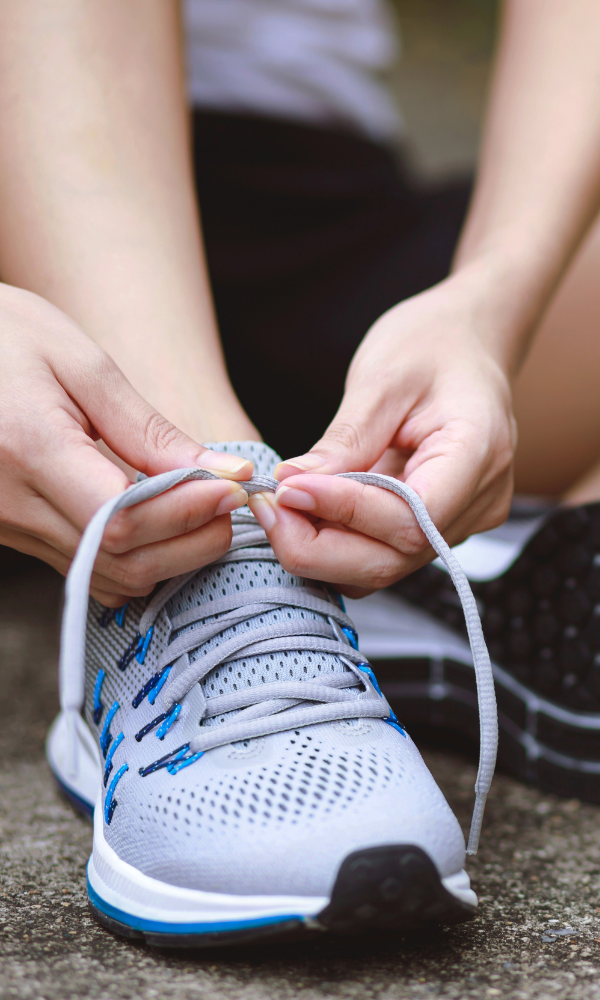Choosing the Right Padel Shoes: A Complete Guide for Every Player
Padel is a fast-paced, dynamic sport that demands quick movements, sudden stops, and rapid changes in direction. The right pair of padel shoes can make a world of difference when it
comes to performance, comfort, and injury prevention. Whether you’re a beginner or an advanced player, selecting the best shoes for your playing style and the court surface is crucial.
Here’s your guide to choosing the perfect padel shoes to enhance your game.

1. SUPPORT & STABILITY
Padel requires frequent lateral movements, sudden pivots, and constant jumping. Without the right support, you risk ankle injuries and fatigue. The ideal padel shoe should provide:
● Ankle Support: If you’re prone to ankle injuries or play at positions that require a lot of quick direction changes, consider high-top shoes. These provide extra ankle support to prevent twists and injuries. Low-top shoes are lighter and offer more flexibility but may not provide the same level of ankle stability.
● Midsole Support: A stiff midsole provides better stability and helps prevent excessive foot movement inside the shoe. This is particularly important for lateral support, especially during fast movements across the court. Shoes with a foam or EVA midsole offer shock absorption, protecting your joints during jumps and hard landings.
2. GRIP & TRACTION
One of the most crucial aspects of padel shoes is their grip. A good grip ensures that you can accelerate, decelerate, and pivot with ease, preventing slips and enhancing your overall performance.
● Outsole Material: Most padel shoes feature rubber outsoles, but the tread pattern and rubber composition vary. Look for more aggressive tread patterns in padel shoes to offer increased durability.
● Pivot Points: Some padel shoes come with pivot points on the outsole, typically around the toe area. These are designed to help with quick turns and pivots, reducing the stress on your feet and knees.
3. COMFORT & CUSHIONING
Comfort is key when it comes to padel shoes. A good pair of shoes should feel comfortable from the first wear and offer sufficient cushioning to protect your feet during long matches.
● Cushioning Materials: The midsole material is where most of the cushioning is located. Materials like EVA foam and polyurethane offer excellent shock absorption, especially during lateral movements and jumps. Look for shoes that provide good cushioning to absorb the impact of the court and keep your feet comfortable.
● Breathability: Padel can be physically demanding, and your feet will likely sweat during intense play. Shoes with mesh uppers or synthetic materials that offer breathability help to keep
your feet cool and dry. This also reduces the likelihood of blisters and discomfort.
4. WEIGHT: LIGHT VS HEAVY
The weight of your padel shoes can impact your agility and comfort on the court. Lightweight shoes make quick footwork easier, while heavier shoes offer more stability and durability.
● Lightweight Shoes: Lighter shoes are typically more flexible and faster to move in. If you’re a player who focuses on speed and agility, a lighter pair of shoes will make it easier to change
directions and move quickly across the court.
● Heavier Shoes: Heavier shoes often offer more durability and additional support. These are suitable for power players or those who rely more on stability during their play. While they may not be as agile as lighter shoes, they offer superior cushioning and stability.
5. DURABILITY
Padel shoes need to withstand the demands of the game, especially during frequent lateral movements, jumping, and sudden stops. The durability of your shoes will depend on both the
material used and the type of court surface you play on.
● Rubber Outsoles: Look for shoes with durable rubber outsoles for long-lasting wear.
● Reinforced Toe and Heel Areas: The toe and heel areas are often the first to wear down. Many padel shoes come with reinforced toe caps or extra protection in the heel area, which extends the life of the shoes.
6. FIT & SIZING
The right fit is essential to avoid discomfort and improve your overall performance. A well-fitting shoe allows your feet to move naturally, providing maximum support and reducing the risk of
blisters or injuries.
● True-to-Size Fit: Always check the size guide of the brand you’re purchasing from. Sizing can vary between manufacturers, so it’s important to measure your foot length and compare it to
the brand’s sizing chart.
● Toe Box Space: Look for a shoe with ample space in the toe box to prevent your toes from being cramped, which can lead to discomfort during long matches. Your feet should feel snug
but not tightly packed, ensuring room for movement without slipping.
● Lacing System: A good lacing system ensures a secure and customized fit. Many padel shoes have asymmetrical laces or a wide lace-up design, allowing for a more precise fit and
minimizing any foot movement within the shoe during play.
Choosing the right padel shoes is essential to improving your performance, comfort, and injury prevention on the court. Whether you’re looking for grip, support, cushioning, or durability, there’s a perfect pair of shoes for you. Pay attention to factors such as court surface, weight, fit, and position-specific needs to find the best option that suits your game.
Visit Baseline Racquets or shop online for more expert tips, and insights to help you elevate your padel game.
